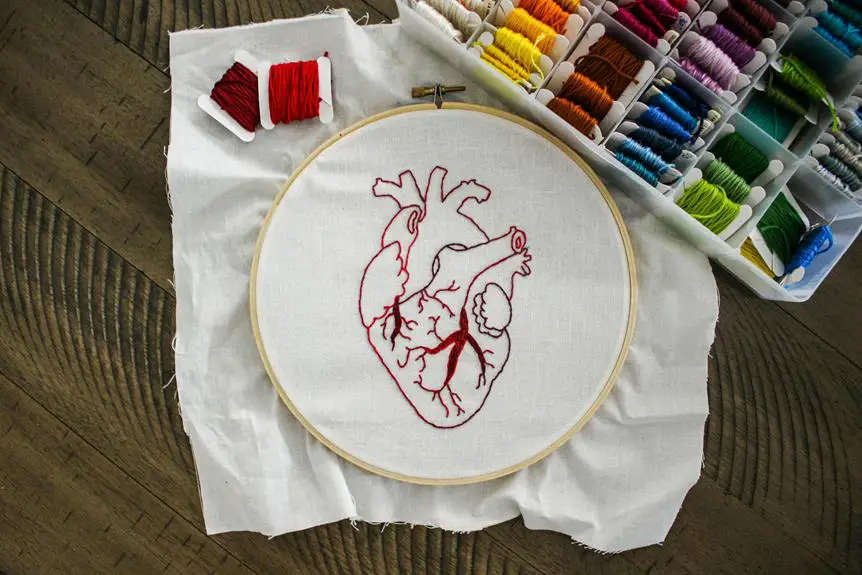When considering poly tricot for your project, you're likely thinking about the costs involved. You're not alone – many manufacturers and businesses want to know what they're getting into financially. Material prices can fluctuate based on demand, production costs, and quality, which can impact your bottom line. But that's just the beginning. Labor expenses, equipment costs, and supply chain fees also come into play. As you weigh the pros and cons of using poly tricot, you'll want to consider these factors and more. But what exactly are the costs you should be prepared for, and how can you mitigate them?
Table of Contents
Material Prices and Fluctuations
When you're considering poly tricot for your project, you'll want to factor in the material's price, which can fluctuate based on market demand, production costs, and the quality of the fabric. You'll need to research current market prices to get an accurate estimate of what you'll pay. Keep in mind that prices can vary depending on the supplier, location, and quantity you need.
It's also essential to consider the quality of the poly tricot, as higher-quality fabrics will generally cost more. You'll need to weigh the benefits of using a high-quality fabric against the potential cost savings of a lower-quality option. Additionally, you should factor in any additional costs associated with working with poly tricot, such as specialized equipment or labor.
To get the best price, you may want to consider purchasing poly tricot in bulk or negotiating with suppliers. You can also look for discounts or promotions that can help reduce the cost. By carefully considering the material's price and potential fluctuations, you can make an informed decision about whether poly tricot is the right choice for your project.
Production Costs and Efficiency
As you factor in the material costs of poly tricot, you'll also want to consider how its production will impact your project's overall efficiency and expenses.
One key consideration is the cost of equipment and machinery needed to work with poly tricot. If you're planning to produce large quantities, you may need to invest in specialized machinery, which can be a significant upfront cost. However, this investment can pay off in the long run by increasing your production speed and reducing waste.
Another factor to consider is the cost of energy and utilities required to power your production process. Poly tricot production can be energy-intensive, especially if you're using heat-setting or drying processes.
You'll want to factor in the cost of electricity, gas, or other fuels needed to power your equipment. Additionally, you may want to consider the cost of maintenance and repairs for your equipment, as well as any necessary upgrades or modifications.
Labor Expenses and Wages
When calculating labor expenses and wages for working with Poly Tricot, you'll need to consider the cost of hiring skilled workers who are familiar with the fabric's unique properties.
You'll also need to factor in the time and resources required to train new employees who may not have prior experience with Poly Tricot.
Hiring Skilled Workers
When hiring skilled workers to handle poly tricot, you'll need to factor in labor expenses and wages, as their specialized expertise comes at a higher cost. When hiring skilled workers, you're not just paying for their time, but also for their training, experience, and ability to work efficiently with poly tricot.
This can be a significant expense, especially if you're looking to hire workers with advanced skills or certifications.
- Higher hourly wages: Skilled workers typically command higher hourly wages, which can add up quickly, especially on larger projects.
- Benefits and perks: Many skilled workers expect benefits, such as health insurance, retirement plans, and paid time off, which can increase your labor expenses.
Training New Employees
Training new employees to work with poly tricot requires a significant investment of time and money, adding to your labor expenses and wages.
You'll need to consider the cost of training programs, which can be substantial, especially if you're hiring employees with little to no experience. These programs may include on-the-job training, workshops, or even sending employees to conferences or seminars.
Additionally, you may need to hire experienced trainers or consultants to teach your employees how to work with poly tricot, which can be a significant expense.
You'll also need to factor in the cost of lost productivity while your new employees are in training. This can be a significant hit to your bottom line, especially if you're a small business or have a tight production schedule.
Furthermore, you may need to invest in additional equipment or materials to accommodate your new employees' training needs.
To minimize these costs, consider implementing a comprehensive training program that gets your employees up to speed quickly and efficiently. By doing so, you can reduce your labor expenses and get your new employees contributing to your business sooner.
Equipment and Machinery Costs
Investing in the right equipment and machinery is crucial to working with poly tricot, and it's essential to factor in the costs of these tools to ensure a smooth production process. As you consider the costs of equipment and machinery, you'll want to think about the specific needs of your production line. Poly tricot requires specialized equipment, such as cutting machines, sewing machines, and heat presses, which can be a significant investment.
- Cutting machines: High-quality cutting machines can range in price from $5,000 to $20,000, depending on the size and features.
- Sewing machines: Industrial sewing machines can cost between $2,000 to $10,000, depending on the type and speed.
When calculating the costs of equipment and machinery, you'll also want to consider maintenance and repair costs, as well as the cost of any additional accessories or supplies. By factoring in these costs, you can ensure that your production line runs smoothly and efficiently, and that you're getting the most out of your investment in poly tricot.
Supply Chain and Logistics Fees
As you weigh the costs of using Poly Tricot, it's essential to consider the expenses associated with getting your materials from point A to point B.
You'll need to factor in shipping and handling costs, which can vary depending on the quantity and location of your suppliers.
Additionally, you should think about inventory storage costs, as storing large quantities of Poly Tricot can add up quickly.
Shipping and Handling
When shipping poly tricot fabric, you'll need to factor in supply chain and logistics fees, which can significantly add to the overall cost, depending on the weight, dimensions, and shipping destination of your order. These fees can be substantial, so it's essential to consider them when calculating your total expenses.
- Weight and size: The heavier and larger your shipment, the more you'll pay in shipping costs. Consider the weight and dimensions of your poly tricot fabric rolls or bundles when calculating your costs.
- Shipping method: Choose a shipping method that balances cost and delivery time. Options like air freight, trucking, or ocean freight have varying costs and transit times.
Inventory Storage Costs
You'll also need to factor in inventory storage costs, which can add up quickly if you're holding large quantities of poly tricot fabric in warehouses or storage facilities.
These costs can include rent or mortgage payments for the storage space, utilities, and equipment maintenance. Additionally, you'll need to consider the cost of labor for managing and maintaining the inventory, including tasks like receiving, storing, and retrieving the fabric.
As you calculate your inventory storage costs, consider the size and weight of the poly tricot fabric rolls, as well as the storage capacity of your facilities.
You may need to invest in specialized shelving or storage solutions to maximize your space and keep the fabric organized. It's also important to consider the location of your storage facilities, as transportation costs can add up if you need to move the fabric to different locations.
Quality Control and Testing Costs
Implementing quality control measures for poly tricot can significantly add to your production costs, particularly if you're testing for specific properties like tensile strength, UV resistance, or colorfastness. As you're likely aware, ensuring the quality of your poly tricot products is crucial to maintaining a good reputation and meeting customer expectations.
However, quality control comes at a cost. You'll need to invest in testing equipment, hire trained staff to conduct the tests, and potentially outsource some of the testing to specialized labs. These costs can add up quickly, especially if you're producing small batches or one-off orders.
Some of the key quality control costs to consider include: Testing for tensile strength, which can involve investing in expensive equipment or outsourcing to a lab. Conducting colorfastness tests to ensure the poly tricot won't bleed or fade excessively. Performing UV resistance tests to ensure the material won't degrade quickly when exposed to sunlight.
Economies of Scale and Discounts
By producing large quantities of poly tricot, you can take advantage of economies of scale and secure discounts from suppliers, which can help offset some of the quality control costs discussed earlier. This is because suppliers often offer discounts for bulk orders, which can lead to significant cost savings. Additionally, producing large quantities can also help you negotiate better prices with suppliers, as you're committing to a larger order.
| Order Quantity | Discount Percentage |
|---|---|
| 100-500 yards | 5% |
| 501-1,000 yards | 10% |
| 1,001-2,000 yards | 15% |
| 2,001+ yards | 20% |
As you can see from the table above, the more poly tricot you order, the higher the discount percentage. This can lead to significant cost savings, especially if you're planning to use poly tricot for a large production run. By taking advantage of economies of scale and securing discounts from suppliers, you can help reduce the overall cost of using poly tricot. This can be especially beneficial if you're working with a tight budget or trying to increase profit margins.
Frequently Asked Questions
Can Poly Tricot Be Used for Outdoor Applications?
You're considering using poly tricot for outdoor applications, but you're wondering if it's suitable. Poly tricot can be used outdoors, but it's not the best choice due to its sensitivity to UV light and moisture.
Is Poly Tricot Suitable for Sensitive Skin?
When choosing poly tricot for clothing or accessories, you're probably wondering if it's gentle on your skin. Generally, poly tricot is a smooth, non-irritating fabric that works well for sensitive skin, but you may want to consider your specific allergies or sensitivities.
How Does Poly Tricot Compare to Cotton Prices?
You'll find that poly tricot prices vary depending on the quality and brand, but generally, it's cheaper than cotton. You can expect to pay between $5 to $15 per yard, making it a budget-friendly option for you.
Can Poly Tricot Be Recycled or Repurposed?
You're considering the eco-friendliness of poly tricot. Yes, you can recycle or repurpose it, but it's not always easy. You'll need to find specialized facilities or get creative with upcycling projects to give it new life.
Are There Any Eco-Friendly Poly Tricot Options Available?
You're looking for eco-friendly poly tricot options, right? Well, you can opt for recycled poly tricot, made from post-consumer waste, or choose biodegradable poly tricot alternatives, which reduce environmental harm without sacrificing performance.
- How Does Ring Spun Cotton Affect Garment Fit and Shape Retention? - August 13, 2024
- What Are the Challenges in Producing Ring Spun Cotton? - August 13, 2024
- Is Ring Spun Cotton Suitable for Plus-Size Clothing? - August 13, 2024







